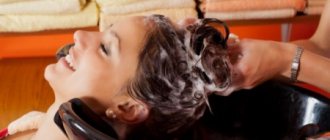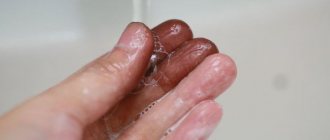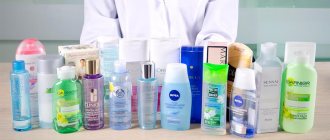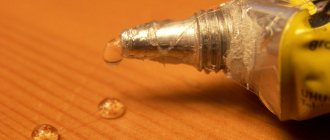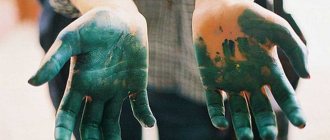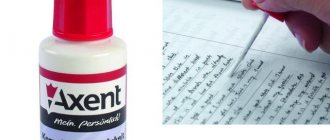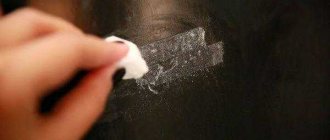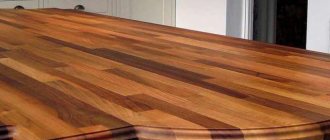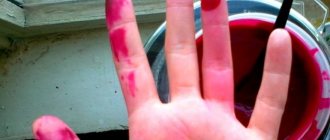I often came across people asking how to wash iodine from their hands and nails. But I myself have never found myself in such a situation, I always did everything carefully and could not understand how one could get very dirty in iodine. But there is a first time for everything. Recently, my nails began to break, so I started looking on the Internet for a recipe on how to save them.
As a result, I found a good recipe for a mask with added iodine, bought it at the nearest pharmacy and decided to make it in the evening. I unscrewed the cap, but there was a problem with the small stopper in the bottle. I couldn’t open it for a long time, I pulled it sharply and all the liquid spilled out. All my hands were brown, and I had to look for a new way, but how to wash iodine off my nails.
Although iodine is produced by humans, it is from chemical elements of natural origin, so it is quite difficult to remove it from any surface. It tends to eat into the material; I found several tips on the Internet that will help you wipe it off your nails and hands.
Useful tips on how to remove iodine from nails
- Use regular hand soap and warm water to remove any iodine stains from your skin. Repeat these steps until the stain disappears. You can also use dish detergent. Sometimes it may take several days for the iodine stain on the skin to completely remove.
- Use nail polish remover. Start washing the iodine and see if it is absorbed into the cotton. This method is best used when liquid stains have just appeared. It is better, of course, to use a liquid with the addition of acetone for this.
- One of the most effective ways to remove iodine from nails is to use medical alcohol. Use a cotton swab; don't use napkins or toilet paper, as they don't absorb the liquid enough and you risk transferring iodine stains from your nails to your fingers. Apply the alcohol in a circular motion. If you are removing iodine stains near a hangnail, lesion, or wound, be careful not to rub the pad over that area. The stain should disappear quickly. Rinse your skin with warm water once the iodine stains are removed.
How to save money on manicure?
Do you want to perfectly master the art of manicure from A to Z and never spend 2,000-3,000 rubles in a salon again? Then learn how to do a manicure yourself and save money, time and nerves!
Come to our School for an online course from top teacher Tatyana Svoboda “Manicure for yourself,” which can now be completed for only 499 rubles !
The teacher will tell you all about the technique of applying the coating, removing it, modern designs, how to strengthen your nails, and much more. You will become a real pro and will be able to create your dream nail designs, and, if you wish, monetize your hobby in the future!
Course bonuses:
We give all students a 15% discount on ready-made manicure starter kits, as well as a 5% discount on purchases at ParisNail and 15% on any other online course. Upon completion of the training, you will be issued an electronic certificate of completion of the course.
Process Features
The stains accidentally got on the nail plate, or the product was applied on purpose; it is not advisable to leave it - iodine eats into the structure and spoils the appearance. Pigmentation does not wash off with plain water; effective cleaning agents are selected.
The longer the mark remains on the nails, the more effort is spent on removal.
There are several options for quickly removing yellow stains from a plate. For sensitive skin, those that do not cause allergies are suitable.
If pigment gets on extended, varnished nails, clean with gentle movements.
The dark spot is not removed in one step; the procedure is repeated several times.
After cleansing, apply a nourishing moisturizer to your hands because stain removers are harsh on fabrics. Rubbing olive oil has a good effect.
How long can you wear gel polish?
First, let's figure out what period of wearing the coating is optimal. Often girls wear gel polish for a month, or even longer. However, they do not understand that they can damage the nail plate.
Technologists advise walking with the coating for no more than 2-3 weeks. Prolonged wear puts stress on the tip of the nail plate, its root suffers from the weight of the coating. All this can lead not only to breakage, but also to deformation of the nail plate.
Why does iodine eat into nails?
This is an active remedy. Once on the skin or plate, the substance reacts with other chemical components that make up the tissue. This is due to its penetration into the layers of the epidermis.
The body needs a natural element for the normal functioning of organs and systems.
When the thyroid gland does not produce iodine in full, drops of the substance that fall on the skin are quickly absorbed into the tissue structure.
If there is an excess, most of the iodine evaporates from the surface of the nail or skin along with alcohol vapor. As a result, the stain does not disappear, but gradually fades .
How can you not remove gel polish?
RULE 1: Under no circumstances should you pick at the gel polish or tear it off the surface of the nail plate, because this can cause serious injury! If you are careless, you can remove the top layer of the nail along with the material, and this can lead to thinning and, at a minimum, painful sensations when in contact with water and various surfaces.
RULE 2: do not file away partially peeled off gel polish. In this case, you also risk cutting off the top layer of the nail and ruining it.
What other consequences might arise?
- There is a possibility of tearing not only the gel polish from the nail, but also the nail plate from the nail bed.
- You peel off the artificial coating, and the nail plate becomes thinner and thinner each time.
- Those with thin nails may feel unbearable pain during coating - the base will burn strongly in the lamp. They can also get a burn to the nail plate, which in turn can lead to onycholysis - separation of the nail plate from the nail bed. It will take quite a long time to treat onycholysis.
- You will have to strengthen the nail plate, and this will require additional time for the manicure procedure.
- You will have to buy materials to strengthen the nail plate: acrylic powder, gel or polygel. And these are additional financial expenses.
- Thin nails become mobile and weak, so the coating may be worn less than usual. You will have to try very hard to avoid detachments and chips.
We hope these reasons are enough to convince you not to peel off the coating from the nail plate and do the gel polish removal according to the rules!
By the way, the peeling process itself is quite painful, it’s hardly worth it.
Methods and means of cleaning
Fresh pigment can be easily washed off with a warm solution with the addition of a detergent. There are other cleaning options.
Iodine removers
There are several effective ways.
| Means | Recommendations |
| Medical alcohol | Moisten a cotton pad and apply it to the plate in a circular motion. If there are wounds on the skin near the treated area, it is advisable not to touch them |
| Alcohol |
ammonia
To achieve the result, toothpaste with a whitening effect, evenly distributed over the stained plate, will help. Wait for the composition to be absorbed, then wash off. The stain will not be completely removed in one go, but will become less noticeable.
Quick Methods
It is possible to erase yellow-brown marks without a trace as soon as the liquid hits the plate. Procrastination complicates the process and makes it lengthy.
The following options will speed up the procedure:
- diluted table vinegar is poured into a small container, fingers are immersed in it for half an hour and removed so that skin irritation does not develop;
- make baths with sea salt (the product is more effective than citric acid);
- dilute a crushed tablet of ascorbic acid in water, keep the stained fingers in the liquid for several minutes.
Stain removers provide quick results. Use chemicals with caution; do not use them on manicures or in the presence of cracks, cuts, or other skin defects.
Diagnostics
Before treating nail fungus, you need to determine the type of pathogen. The doctor collects anamnesis, conducts an examination, and prescribes tissue scrapings, which will help determine the type of pathogen. If necessary, fluorescent diagnostics will be prescribed, which consists of examining the nail using a Wood's lamp.
After the examination and the results of the examination, the patient will be prescribed treatment.
Photo: Examination of nails by a dermatologist
Features of cleaning depending on the type of nail coating
If iodine gets on your extended nails
Not all methods suggested in the table are applicable on artificial nails. Aggressive means lead to delamination of the composition, which necessitates re-building.
Harmless cleaning options are vegetable oil, soda baths, toothpaste. It is wiser not to remove iodine from extended nails, but to apply a layer of dark varnish on top.
Ways and means to remove iodine from shellac (gel polish)
All known methods, used with caution, will help remove antiseptic from shellac. Acetone, paint remover, and alcohol-containing compounds turn a glossy surface into a matte one.
Brown stains from gel polish must be removed immediately. It quickly eats into the paint layer and remains on it in the form of a yellow mark, which is removed with repeated vinegar baths.
Materials and tools for removing gel polish using the soaking method
To soak gel polish with a special liquid, we will need:
- a rough file, the abrasiveness of which is approximately 100 grit;
- cotton pads;
- scissors for cutting cotton pads;
- gel polish remover;
- aluminum foil (you can use food grade foil instead of professional grade);
- orange stick or metal pusher;
- buff;
- file for natural nails;
- cuticle oil and hand cream (if you do not plan to apply a new gel polish coating immediately or on the same day);
- paper towel or napkins.
Nail file classic pink 100/180 g ParisNail
Gel polish remover E.MiLac Remover 1000 ml
Orange sticks small IRISK 90-100 pcs
Pusher for manicure P-09 wide spatula/peak length 132 mm Nippon Nippers
Buff mini 100/180 white ParisNail 50 pcs
Disposable files 220/280 11.5 cm (05 Turquoise) IRISK 10 pcs/pack
Two-phase cuticle oil strengthening Apple Vogue Nails 10 ml
Nourishing hand cream “Delicious hands” Blackcurrant IRISK 250 ml
Instead of liquid, you can use special napkins for soaking gel polish.
In this case we will need:
- rough nail file;
- gel polish remover wipes;
- orange stick or metal pusher;
- buff;
- file for natural nails;
- cuticle oil and hand cream (if you do not plan to re-coat);
- paper towel or napkins.
Straight file black UT-401 A 100-180 ZINGER
Wipes for removing gel polish, polish in individual packaging InGarden 200 pcs
Orange sticks medium IRISK 8 pcs
Buff mini 100/180 black ParisNail 50 pcs
Disposable files 220/280 11.5 cm (06 Purple) IRISK 10 pcs/pack
Cuticle oil “Jasmine” in pencil ruNail
Hand cream Cream Oil with grape seed oil and jojoba ARAVIA 550 ml
Contraindications
Despite the effectiveness of iodine for nail fungus, this remedy still has contraindications. If you do not follow the dosage of the solution, you can get a skin burn. In some cases, iodine abuse leads to skin dermatitis. The following manifestations are also possible:
- itching;
- burning;
- skin redness;
- rash.
It is better not to take risks and consult a specialist before using iodine and any recipes based on it. It is possible that the doctor will select a more suitable treatment.
Kinds
Depending on the cause, there are several types of disease.
The most common onycholysis is:
- Traumatic. Nails begin to peel off after blows, wounds, burns, splinters, exposure to heat, cold, prolonged exposure to water, or wearing tight shoes. This also includes pathological changes caused by the action of acids, alkalis, solvents, and household chemicals;
- Fungal. It occurs due to the entry and reproduction of fungal infection pathogens in the subungual space. Formed as a secondary complication of onychomycosis;
- Allergic. Onycholysis develops as an allergic reaction due to taking medications with photosensitizing properties, ultraviolet irradiation (photo onycholysis), and contact of the nail plate with harmful chemicals.
Depending on the size of the affected area, onycholysis can be partial, when only a small area of the nail peels off in the form of a strip or semicircle, and complete, when it comes off entirely. Separation of the nail plate can occur from the distal (free) edge or from the lateral ridges (lateral onycholysis).
